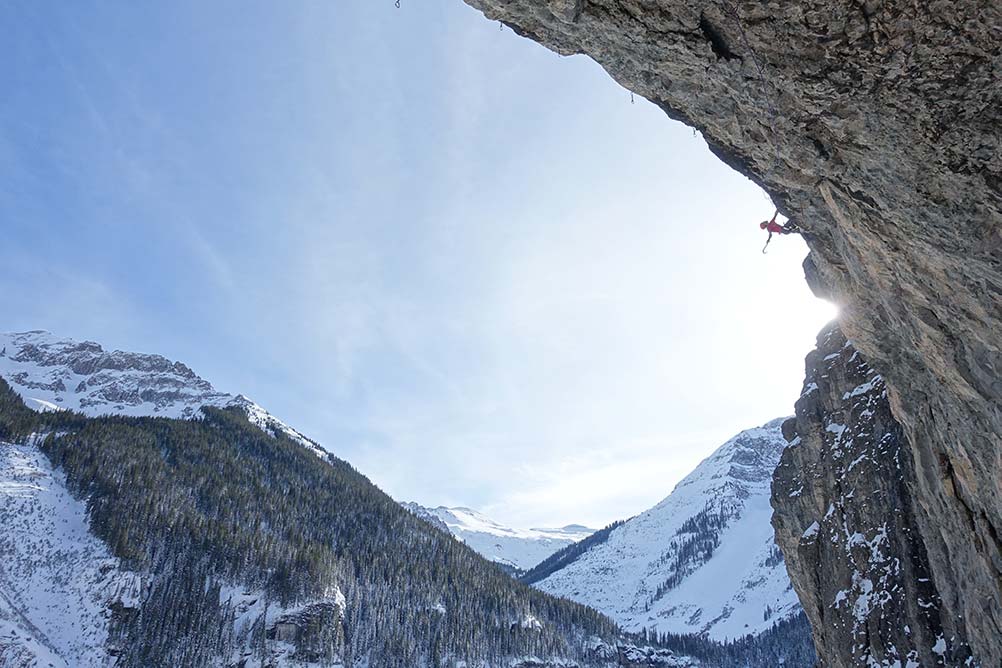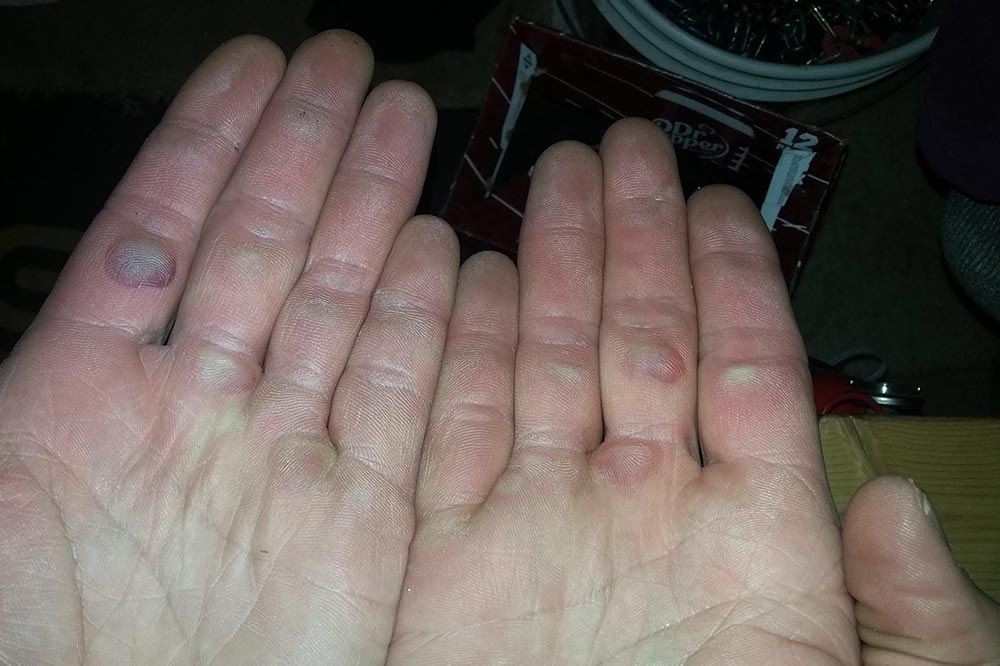Nathan Kutcher Quickly Repeats Super Wobbler D14-
-

Nathan Kutcher Climbing Super Wobbler D14-
Two-time Ouray Ice Fest winner and Canadian National Ice Climbing Team member Nathan Kutcher has just repeated Super Wobbler D14-. The route is located at the Hall of Justice near Ouray, CO (at an approximate elevation of 3,300m), is about 40m long and climbs across the cave starting at Super Juan D11, climbing You're My Hero D12-, crossing Pull the Trigga D11 and finishing up on Wonder Woman's Wobbler M10. While the route has some difficult new climbing, Kutcher points out that there are “a lot of places to stop and rest and none of the moves are super-hard.”
Kutcher climbed the route on his first attempt during his first day back in Ouray. And while he would “like to call it a flash,” he points out that he “climbed many of the routes that Super Wobbler crosses during previous visits to Ouray.”
“I really didn't remember much about any of the climbing and ended up skipping a number of holds later in the route because I didn't see them until after I climbed past them,” recounts Kutcher. “I flashed the new section of climbing and just kept going. Just when I was feeling like I couldn’t hang on anymore, I found a rest stance where I was able to recover.”
While the guidebook and subsequent repeats by locals suggest that Super Wobbler is D14-, Kutcher is skeptical. “It’s certainly long, but the number of decent rests made it possible to get a significant amount of recovery between cruxes. I would call it D12+, and if someone said D12 I don't know if I would argue.”
Kutcher climbed the route on his first attempt during his first day back in Ouray. And while he would “like to call it a flash,” he points out that he “climbed many of the routes that Super Wobbler crosses during previous visits to Ouray.”
“I really didn't remember much about any of the climbing and ended up skipping a number of holds later in the route because I didn't see them until after I climbed past them,” recounts Kutcher. “I flashed the new section of climbing and just kept going. Just when I was feeling like I couldn’t hang on anymore, I found a rest stance where I was able to recover.”
While the guidebook and subsequent repeats by locals suggest that Super Wobbler is D14-, Kutcher is skeptical. “It’s certainly long, but the number of decent rests made it possible to get a significant amount of recovery between cruxes. I would call it D12+, and if someone said D12 I don't know if I would argue.”
-

Climbing Super Wobbler is hard on the hands.
Kutcher points out that “the route felt like a bunch of D8-/D10+ roof sections with decent rests in between. If the new crux were at the end of the route I think the route it could justify a harder grade, but the new crux is before and after some good rests.”
Kutcher also stresses that Mixed/Drytool (M/D) grades are relatively unconsolidated:
“Maybe I'm out to lunch. It does take a certain amount of fitness to recover between hard sections, as well as a level of skill and confidence to climb through hard parts efficiently, but it’s difficult to say to what degree these factors should influence the rating of a route. Currently, the actual change in difficulty between high-end grades seems to be non-existent. Routes keep getting longer, but the grades seem to have less meaning. You have to remember that moves that may have seemed impossible at first become very repeatable with practice.”
World-renowned Canadian ice and mixed climber Will Gadd has written (on the Black Diamond website as well as on his own blog) about the problematic grade-inflation that seems to be occurring in the mixed/drytooling world. In the articles he suggests that there is often very little real difference in difficulty in high-end mixed routes and that climbers should consider a more conservative grading approach.
Rock climbing struggled with these same issues – especially when trying to grade difficult to onsight (cryptic) routes. It eventually realized that grading based on first impressions (onsight) is flawed and it’s why most cragging rock routes have moved away from this paradigm. It seems that mixed/drytooling cragging routes need to embrace similar objectivity when it comes to grades.
Kutcher also stresses that Mixed/Drytool (M/D) grades are relatively unconsolidated:
“Maybe I'm out to lunch. It does take a certain amount of fitness to recover between hard sections, as well as a level of skill and confidence to climb through hard parts efficiently, but it’s difficult to say to what degree these factors should influence the rating of a route. Currently, the actual change in difficulty between high-end grades seems to be non-existent. Routes keep getting longer, but the grades seem to have less meaning. You have to remember that moves that may have seemed impossible at first become very repeatable with practice.”
World-renowned Canadian ice and mixed climber Will Gadd has written (on the Black Diamond website as well as on his own blog) about the problematic grade-inflation that seems to be occurring in the mixed/drytooling world. In the articles he suggests that there is often very little real difference in difficulty in high-end mixed routes and that climbers should consider a more conservative grading approach.
Rock climbing struggled with these same issues – especially when trying to grade difficult to onsight (cryptic) routes. It eventually realized that grading based on first impressions (onsight) is flawed and it’s why most cragging rock routes have moved away from this paradigm. It seems that mixed/drytooling cragging routes need to embrace similar objectivity when it comes to grades.
Join the discussion of this and other climbing related stories at https://ontarioclimbing.com/forum/


